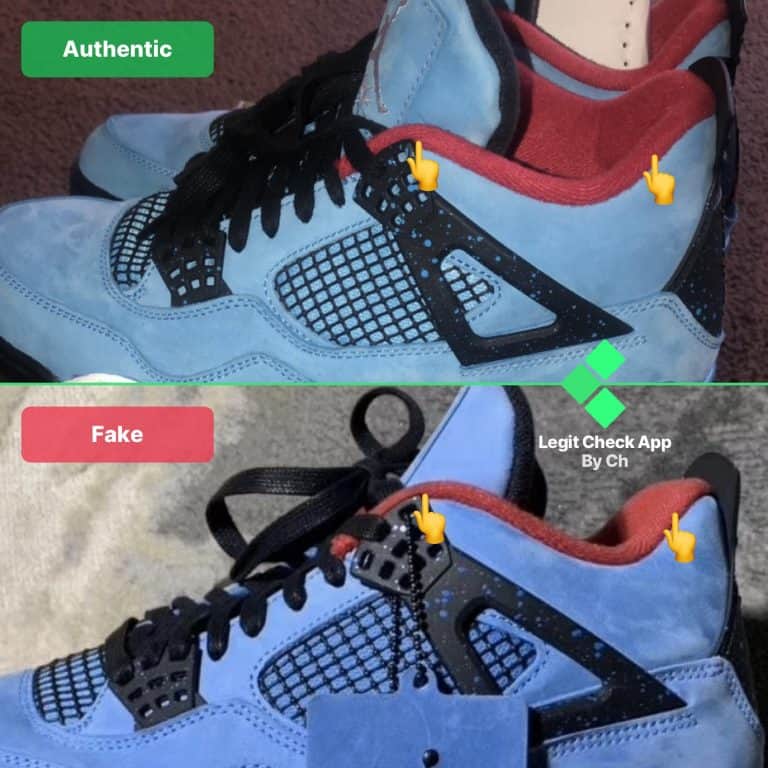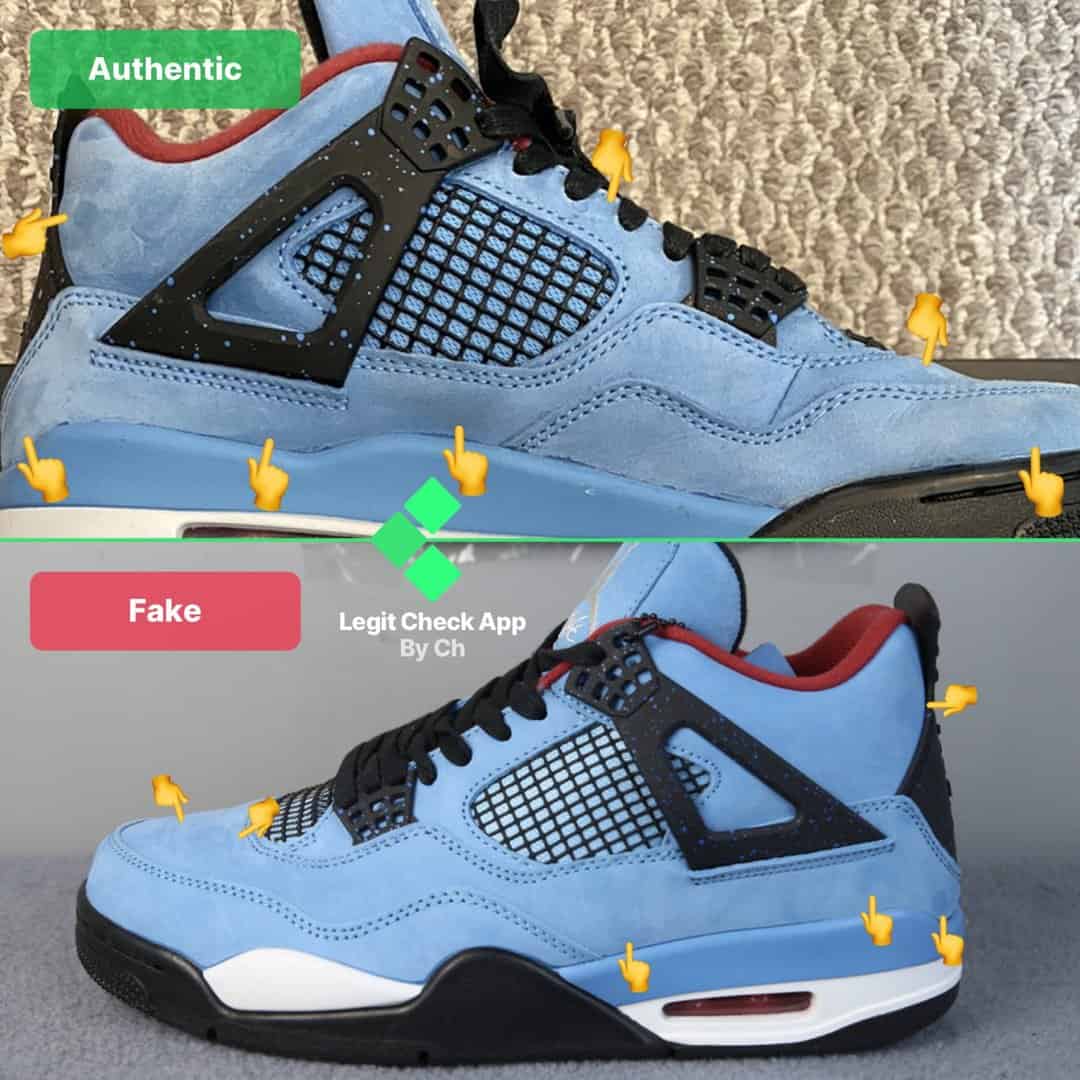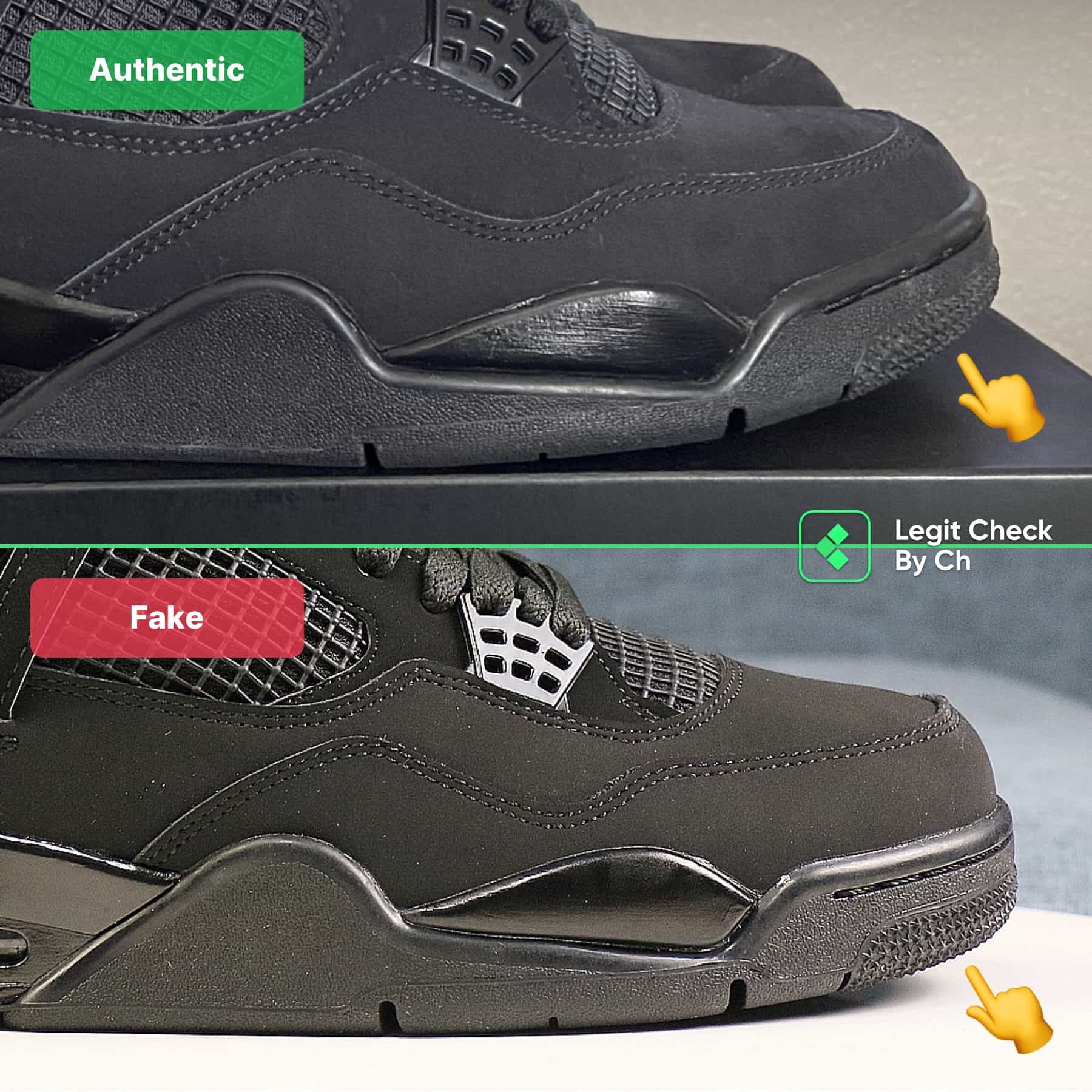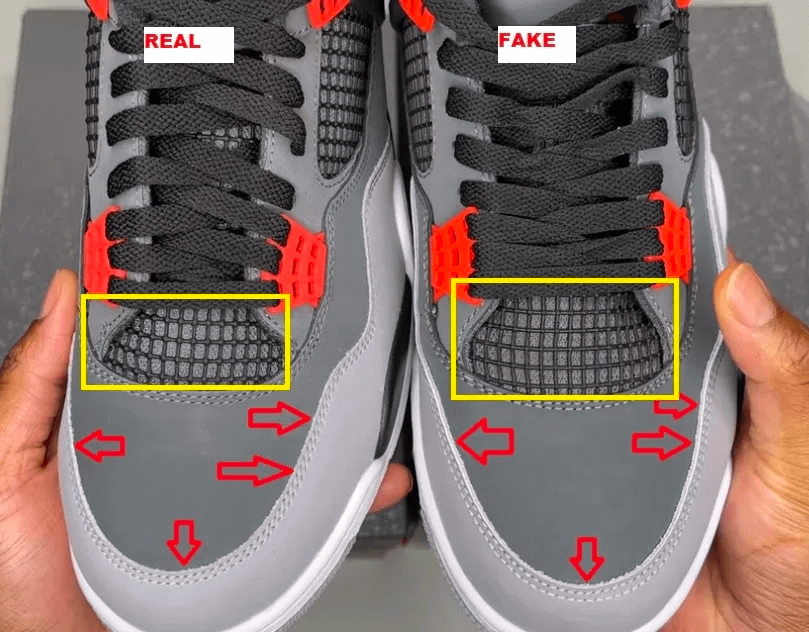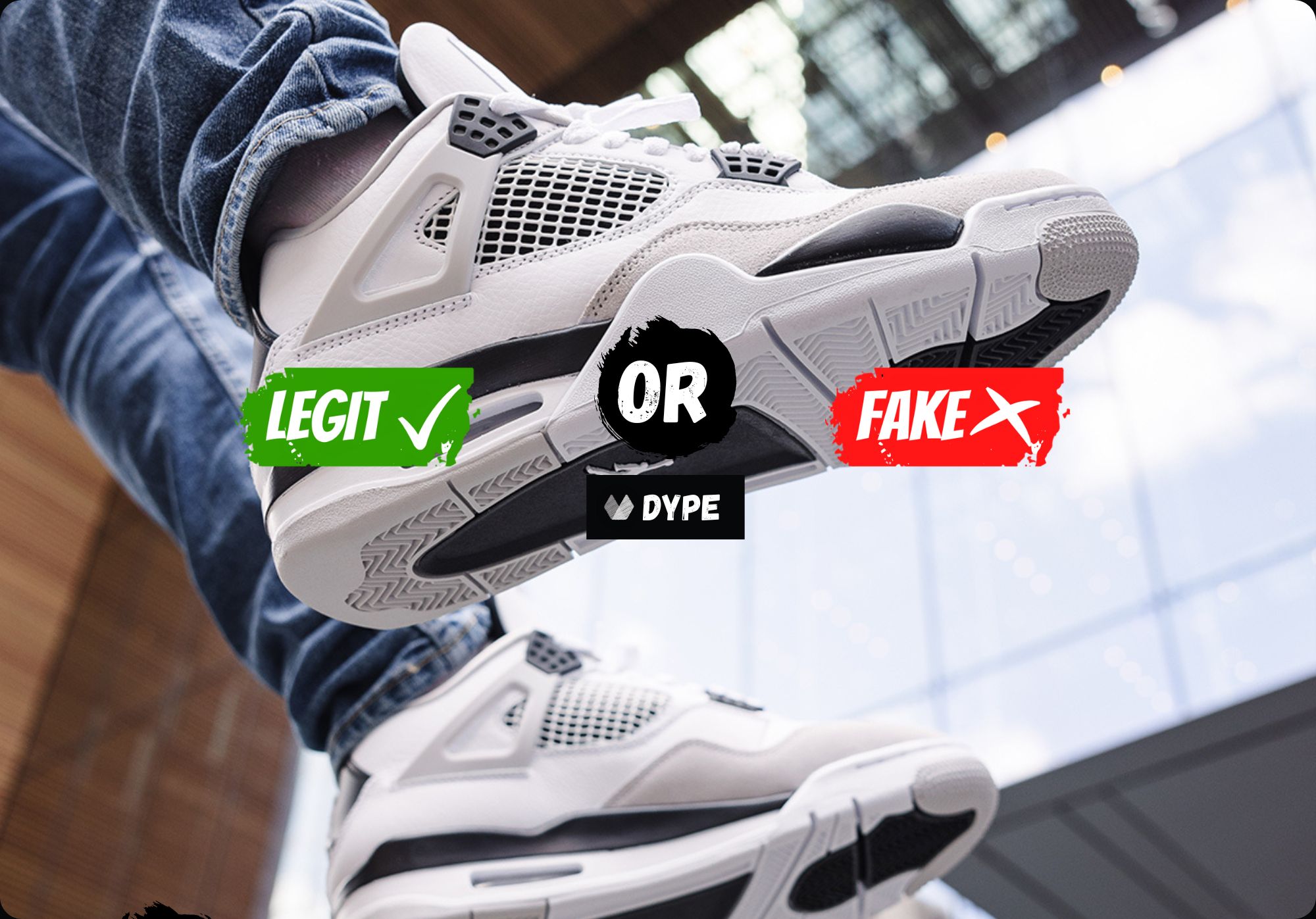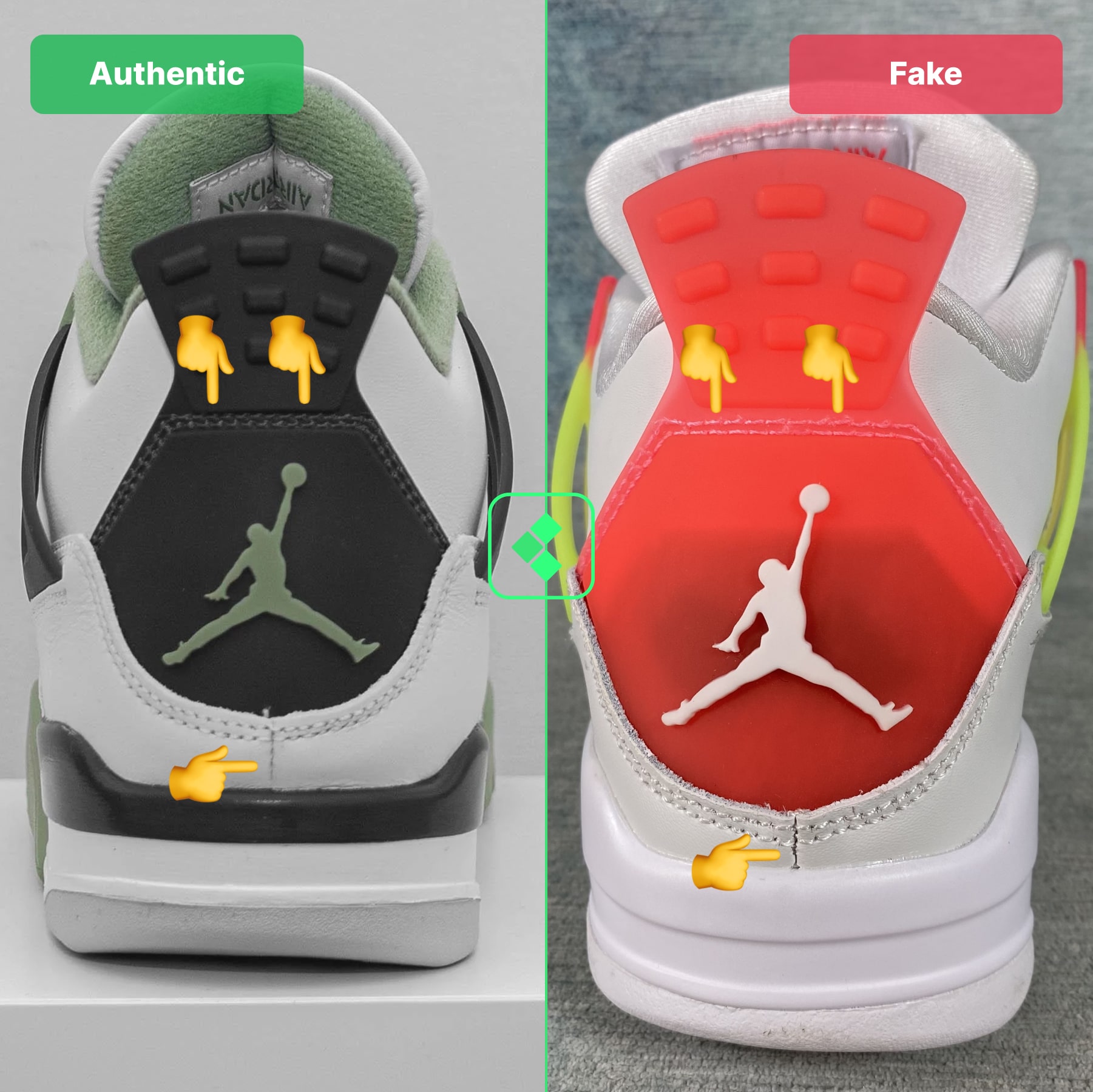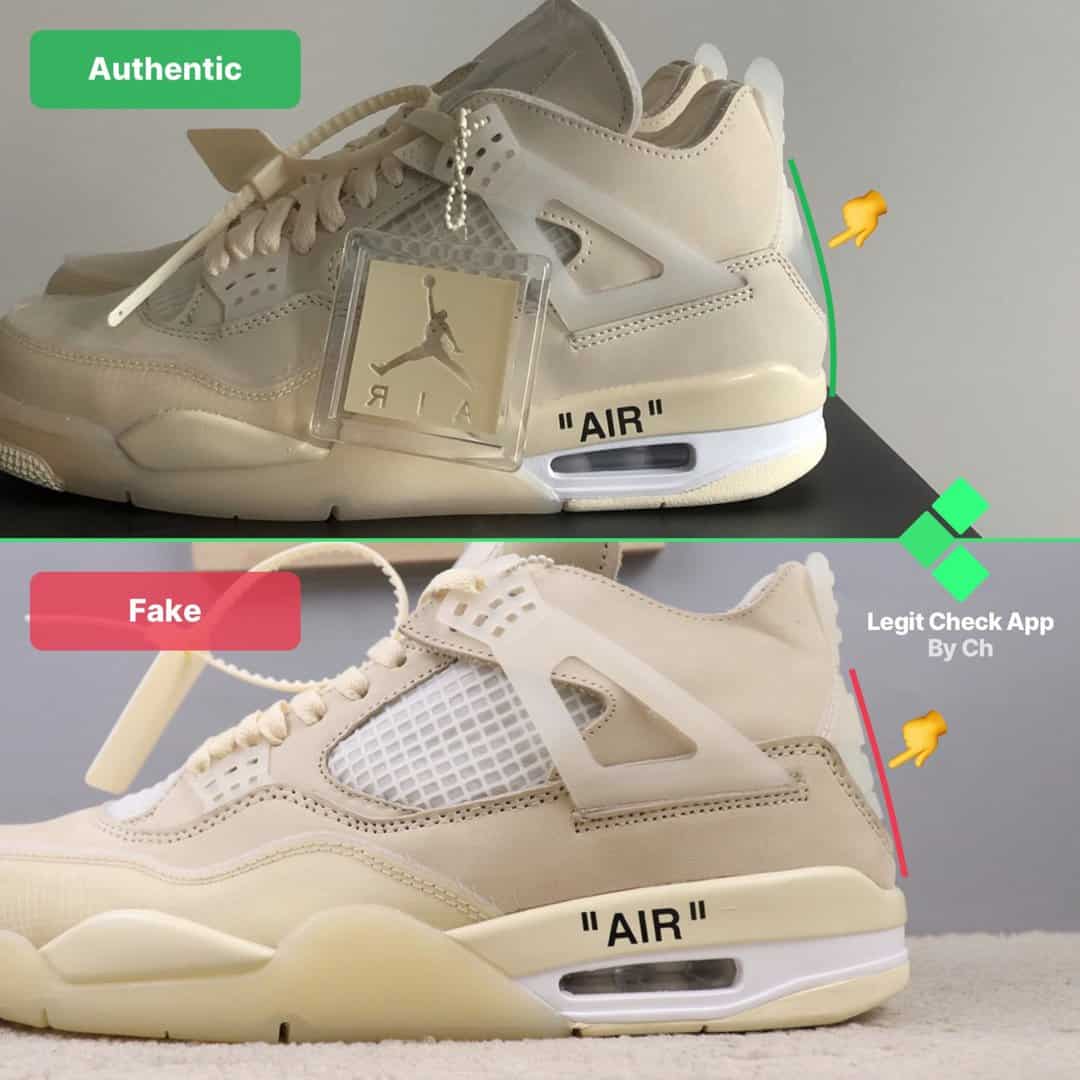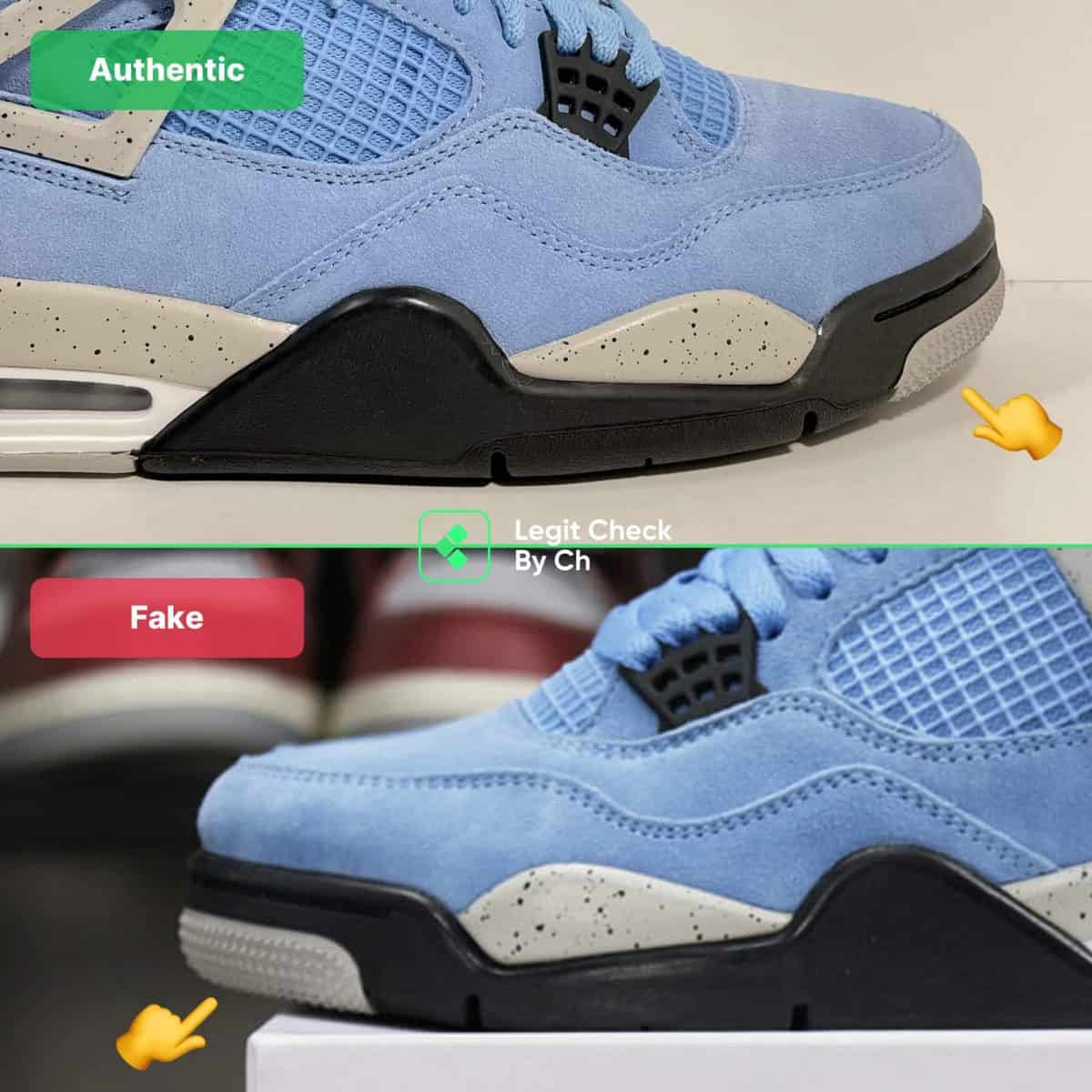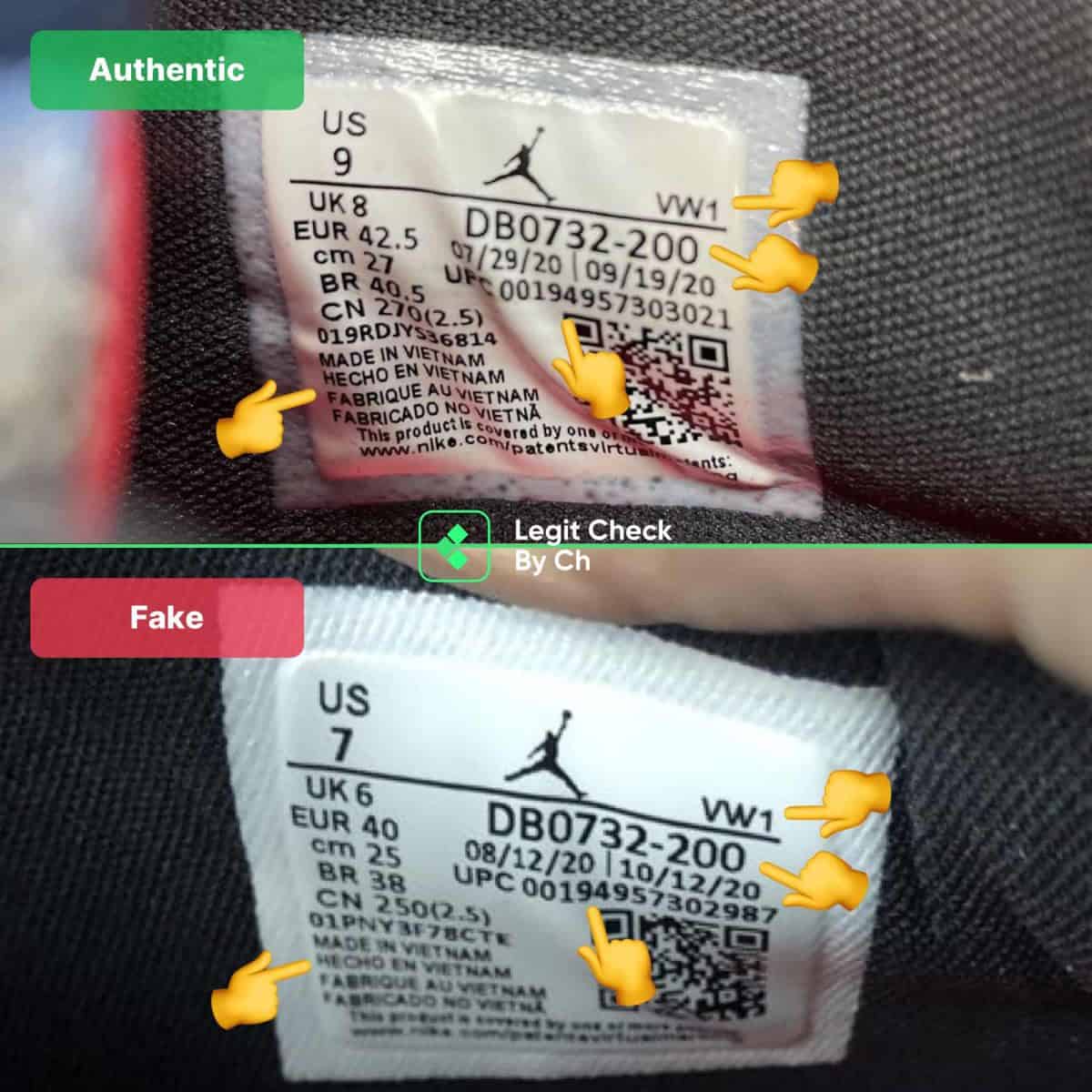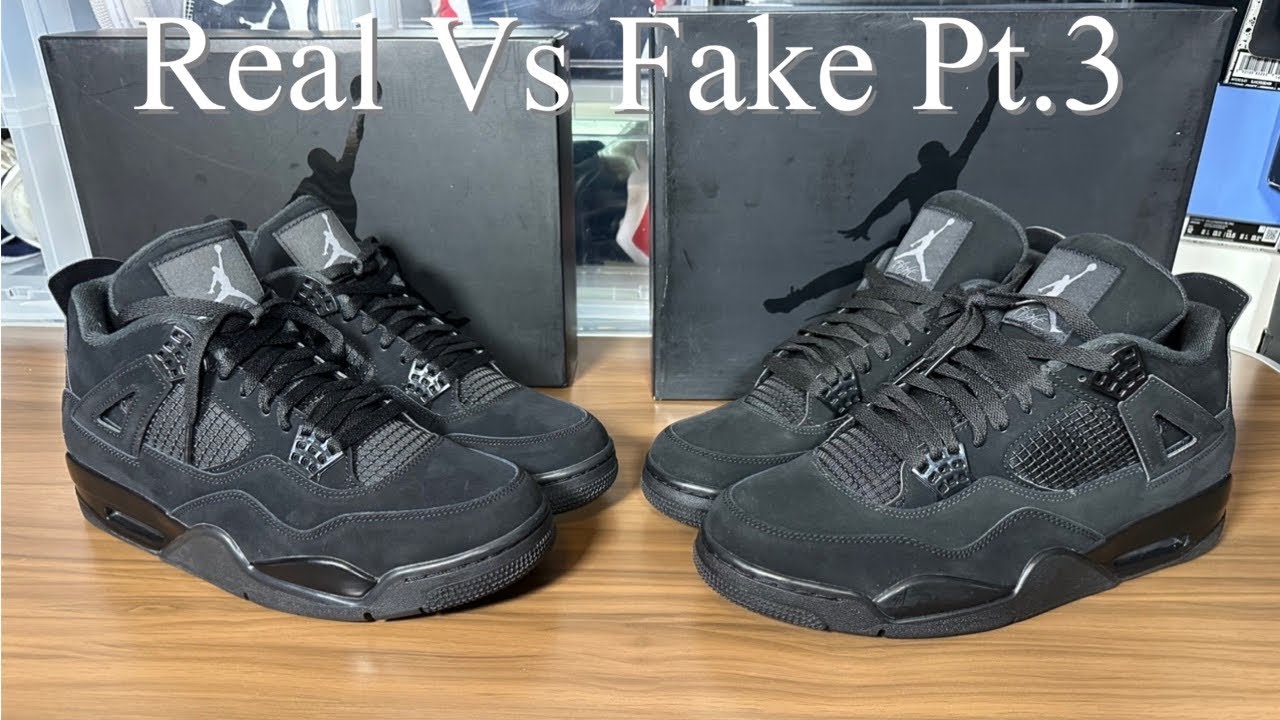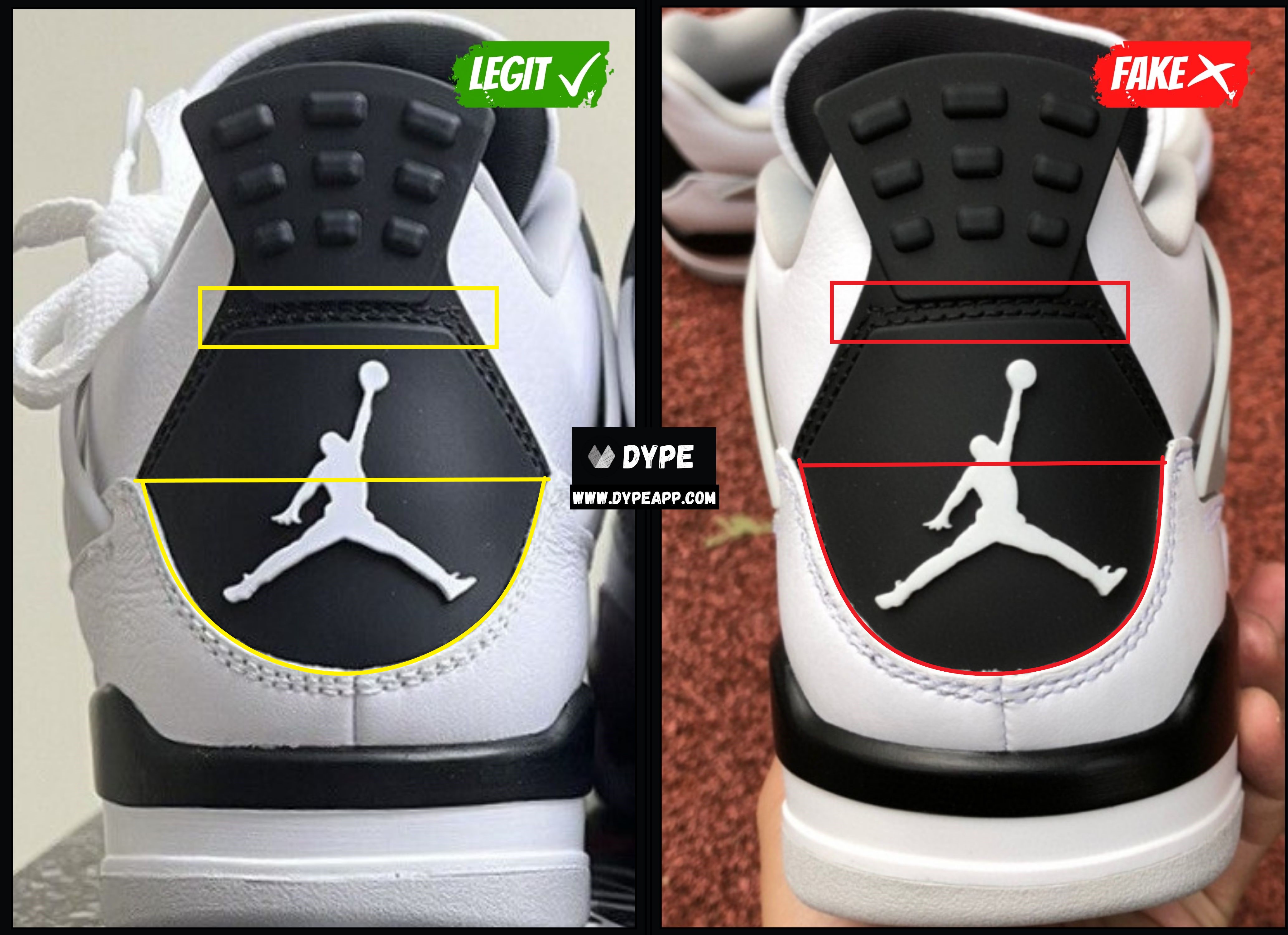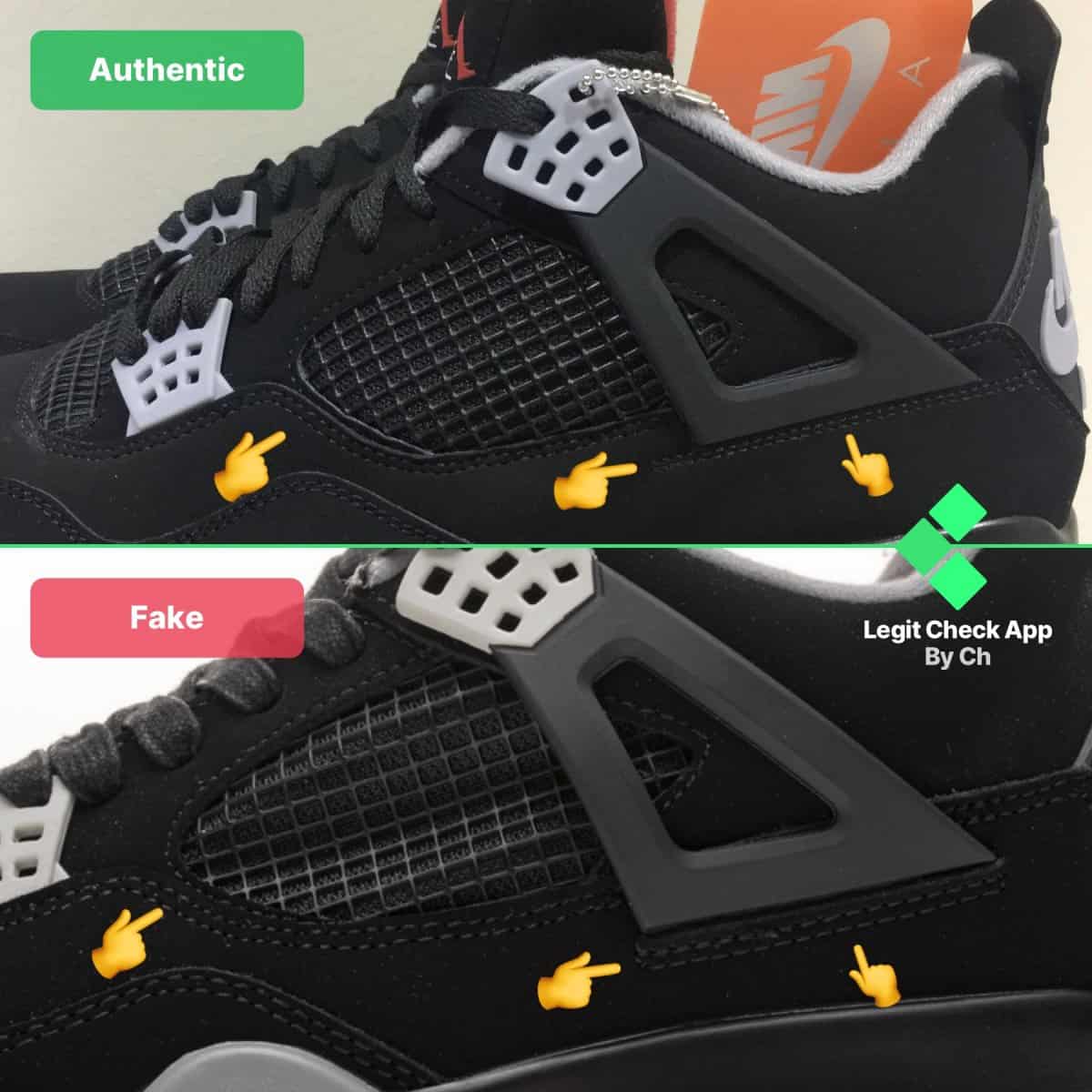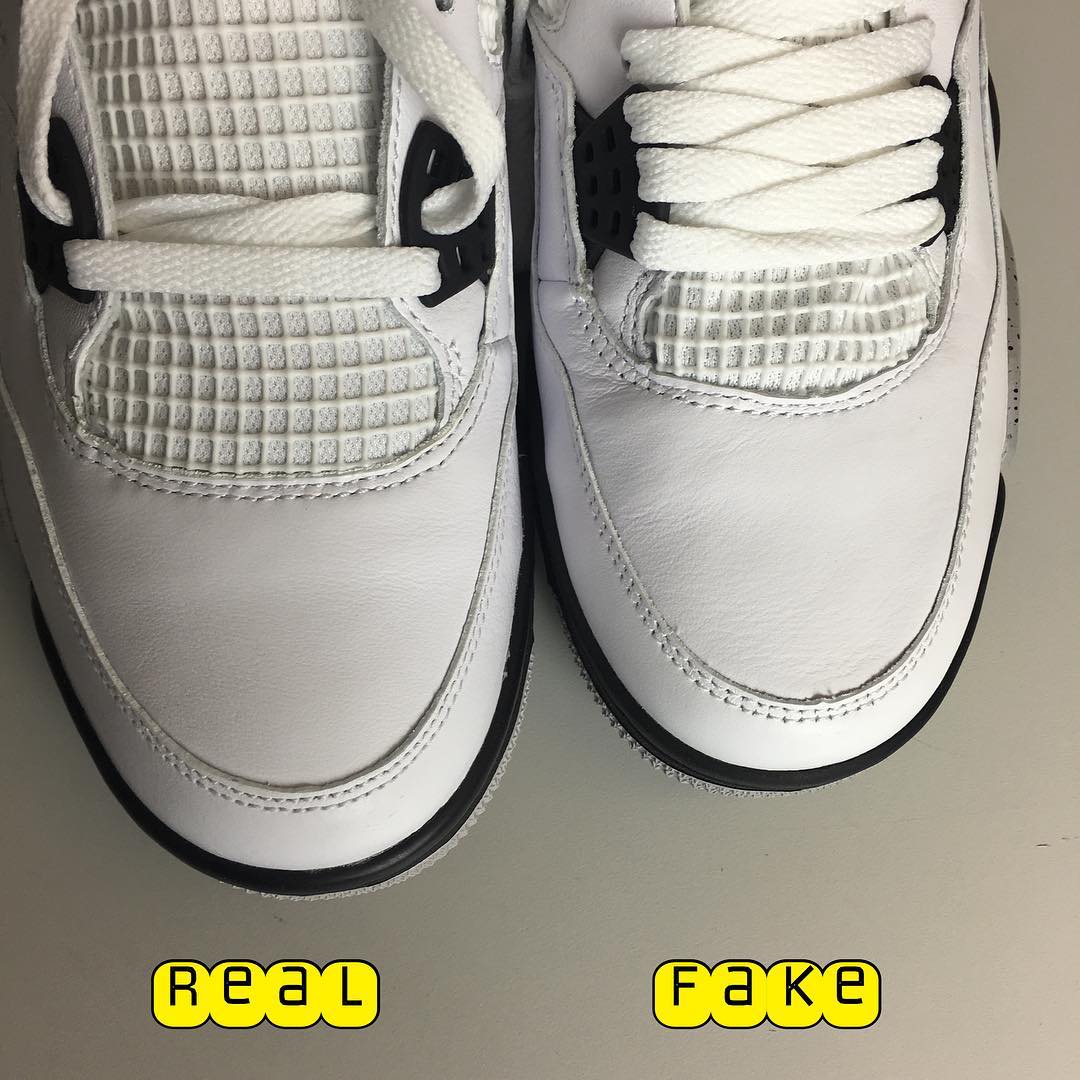Alright, sneakerheads and wannabe sneakerheads! You've set your sights on a pair of Jordan 4s, a certified icon. But before you drop your hard-earned cash, let's make sure those babies are the real deal. Nobody wants to get burned with a fake pair of kicks!
The Sneaky Sneaker Sniff Test (and Other First Impressions)
First things first: give 'em a good once-over. Does the shoe feel right? It shouldn't feel like you're holding a cardboard cutout of a sneaker.
Seriously, a real Jordan 4 has a certain heft to it, a weight that whispers, "I'm legit." Now, take a sniff! Does it smell like fresh leather and quality materials, or like a tire fire in a plastic factory? Fakes often have that distinct, unpleasant chemical odor. You've been warned!
Cage Me If You Can (Or Can't)
Pay close attention to the mesh netting on the sides of the shoe, that's the 'cage'. The real cage has a certain angle and firmness; it doesn’t flop around like a sad, forgotten screen door. Fakes often get this wrong, with cages that are too flimsy or the wrong shape.
The Back Tab Tango
Ah, the back tab – a crucial piece of the Jordan 4 puzzle. On most releases, this plastic tab has the Nike Air logo or the Jumpman logo. If it looks wonky, crooked, or poorly printed, red flags should be waving like crazy!
Give the back tab a gentle flick. A real one should snap back crisply. Fakes tend to be made of cheaper, more pliable plastic, so they might bend or feel soft. Give that a try!
Stitching Shenanigans
Take a magnifying glass (or just squint really hard). Is the stitching clean and even? Or does it look like a drunken spider went on a sewing spree? Authentic Jordan 4s have meticulous stitching, a sign of quality craftsmanship.
Loose threads, uneven spacing, or just plain sloppy stitching are dead giveaways of a fake. Think of it like this: real Jordans are stitched by skilled artisans; fakes are stitched by… well, let's just say they're not artisans.
Sole Searching: The Outsole Odyssey
Flip the shoe over and examine the outsole. Does the pattern look crisp and well-defined, or blurry and ill-defined? The traction pattern should be sharp and grippy. Fakes often skimp on the details here.
Also, check for the Jumpman logo on the outsole. Is it the right size and shape? Is it centered correctly? If the Jumpman looks like he's been hitting the gym way too hard (or not at all), you might have a problem.
Boxed In: The Packaging Predicament
Don't underestimate the power of the box! A genuine Jordan 4 box will be made of sturdy cardboard and have crisp, clear printing. The label on the box should match the shoe exactly: style code, size, colorway, everything.
If the box looks like it was run over by a truck (or printed on a potato), that's not a good sign. Typos on the box label are another HUGE red flag. Nkie Air, anyone? Yikes!
The Price is Wrong, Bob!
This one is simple but crucial. If a deal seems too good to be true, it probably is. A brand-new pair of Jordan 4s selling for $50? Yeah, right. Don't fall for it.
Do your research and know the going market price for the model and condition you are after. Remember, investing in authenticity is worth the peace of mind.
The Ultimate Test: Get a Pro's Opinion
If you're still unsure, take your shoes to a reputable sneaker consignment shop or authentication service. These experts have seen it all and can spot a fake from a mile away.
It might cost you a few bucks, but it's a small price to pay to avoid getting stuck with a worthless pair of fakes. Think of it as an investment in your sneaker sanity!
So there you have it! With a little bit of knowledge and a keen eye, you can protect yourself from the dreaded fake Jordan 4. Happy hunting, and may your sneaker game always be strong!
